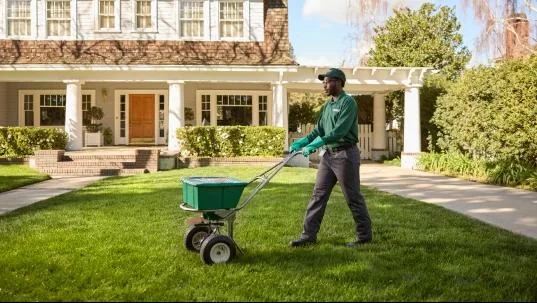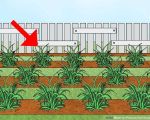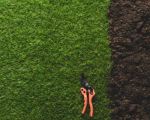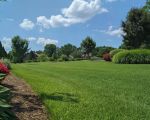
How I Transformed My Small Yard with Smart, Customized Lawn Care
I used to think having a small yard meant less work. But after years of battling uneven patches, weeds that popped up overnight, and a lawn that never quite looked right, I realized small spaces come with their own unique set of challenges. If you're in the U.S. and struggling with lawn care for a small yard, I’ve been there—and I’ve got solutions that work.
1. Understanding the Unique Needs of Small Yards
Small yards aren’t just miniature versions of big ones. They often deal with shade from nearby buildings, soil that’s been overworked during home construction, and drainage issues due to close landscaping. In my case, my side yard barely got two hours of sunlight a day, and water would pool up after even a light rain. Knowing these constraints helped me tailor a lawn care plan that actually worked.
1.1 Recognizing Microclimates
I discovered that even in a small yard, different spots had totally different conditions. The area near the fence stayed damp and shady, while the front corner got full sun and dried out fast. I started treating each section like its own ecosystem, adjusting my watering and seeding accordingly. This small tweak made a massive difference in how healthy my grass looked.
1.2 Soil Testing: The Game Changer
One of the best things I did was test my soil. It cost under $20 and told me exactly what nutrients I was missing. Once I adjusted with the right fertilizer mix—less nitrogen, more potassium—the results were almost immediate. My grass started filling in thick and strong, especially in the trouble zones.
2. Choosing the Right Grass for Your Space
Not all grass is created equal. After failing with traditional Kentucky bluegrass, I switched to fine fescue for the shady areas and Bermuda for the sunniest spots. The difference was night and day. The key is to match your grass type to your yard’s specific light, water, and foot traffic conditions.
2.1 Region-Specific Choices
Living in the Southeast U.S., I learned that warm-season grasses thrive here better than cool-season ones. But if you're in the Midwest or Pacific Northwest, your choices will differ. I recommend checking USDA zone charts or visiting a local lawn center to get guidance based on your exact region.
3. Lawn Maintenance Routines That Actually Work
Maintenance for small yards can be efficient and still produce stunning results. Here's what I stick to every season:
- Spring: Dethatching, core aeration, soil testing, reseeding
- Summer: Weekly mowing, deep watering twice a week, pest inspection
- Fall: Overseeding, compost application, leaf cleanup
- Winter: Mower maintenance, planning improvements, snow damage prevention
3.1 Mulching and Edging
Small yards benefit immensely from clean edges and mulch borders. I installed a 4-inch mulch buffer around my yard, which keeps grass from invading flower beds and helps retain moisture. It also makes mowing easier and faster.
4. Dealing with Pests and Weeds in Tight Spaces
I once made the mistake of over-fertilizing, which turned my lawn into a weed magnet. In small yards, infestations can take over fast. I learned to use pre-emergent herbicides early in the season and stick with organic spot treatments to stay ahead. For pests like grubs or chinch bugs, beneficial nematodes worked wonders without harming my dog or kids.
4.1 Organic and Pet-Safe Solutions
Living with pets, I had to find treatments that wouldn't harm them. I now use corn gluten meal as a natural weed suppressant and neem oil for pest control. They're safe, and surprisingly effective when used consistently.
5. Space-Saving Lawn Tools I Swear By
Storage is limited when you have a small yard and garage. I invested in a compact electric mower that folds up and a multi-tool system with attachments for edging, trimming, and blowing. I can hang everything on one wall and still have room for my bike.
5.1 Smart Tech for Lawn Care
Installing a Wi-Fi-enabled irrigation timer helped me stop overwatering. It adjusts based on local weather forecasts, saving both money and water. I also use a mobile soil monitor that syncs to my phone. These tech upgrades made maintenance feel less like a chore.
6. Real Stories, Real Results
When my neighbor Sam saw the transformation, he asked me to help with his yard too. He had different issues—heavy clay soil and frequent foot traffic from kids. We worked together to install stepping stones and reseed with more resilient grass. Within three months, his lawn was healthy and green. It's proof that no yard is too small for a big improvement.
If you're looking to upgrade your lawn and don’t know where to start, I highly recommend checking out our directory at Lawn Care Services. You’ll find service providers who understand regional climates, small space challenges, and how to deliver personalized care that works.
7. Final Thoughts: Loving Your Lawn Again
Small yards may be compact, but they can be beautiful, lush, and functional with the right care. Whether you’re starting from scratch or just trying to fix a few brown spots, the key is to treat your lawn like a unique project—because it is. With smart tools, a bit of science, and a willingness to experiment, you’ll be amazed at what you can achieve.








